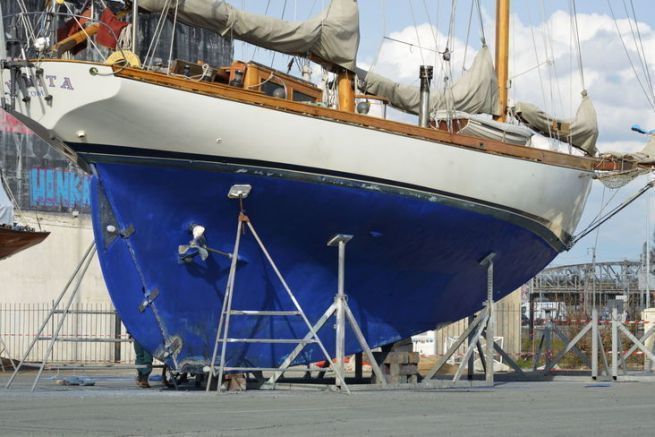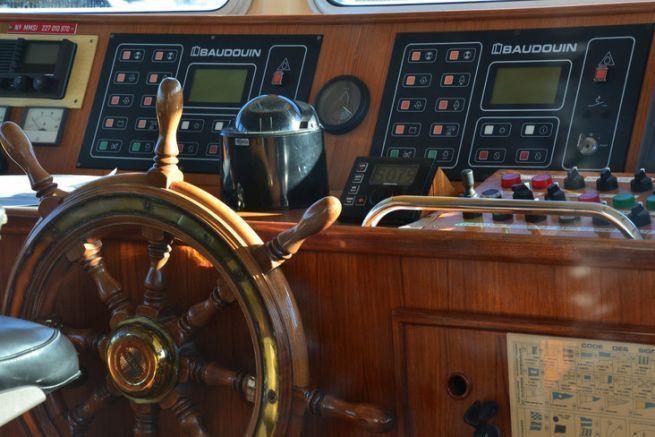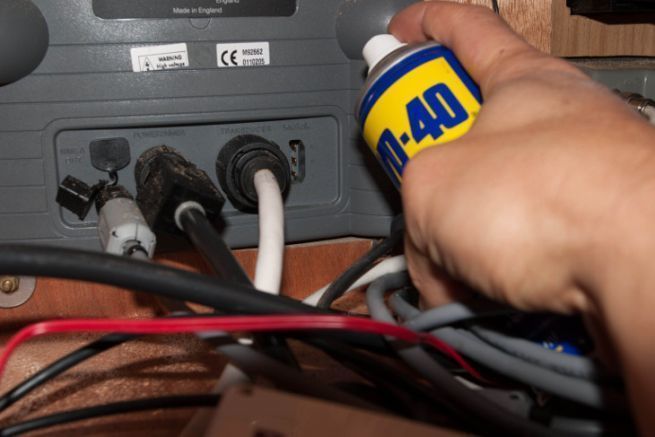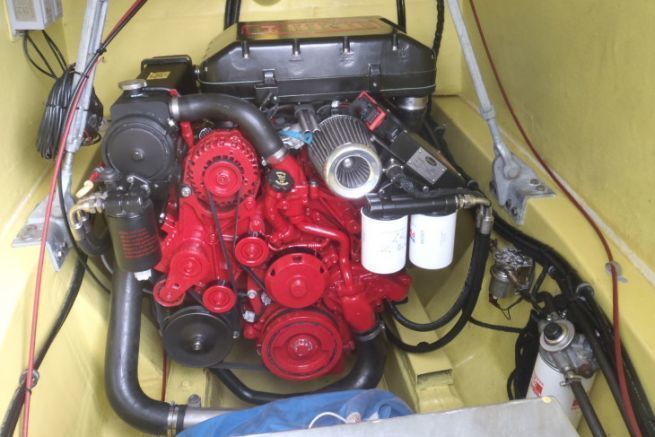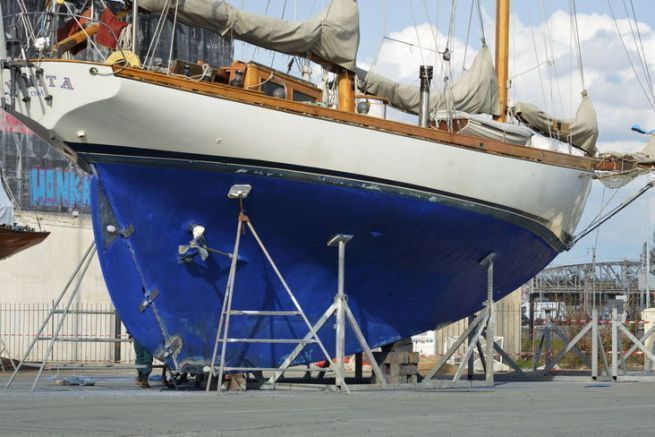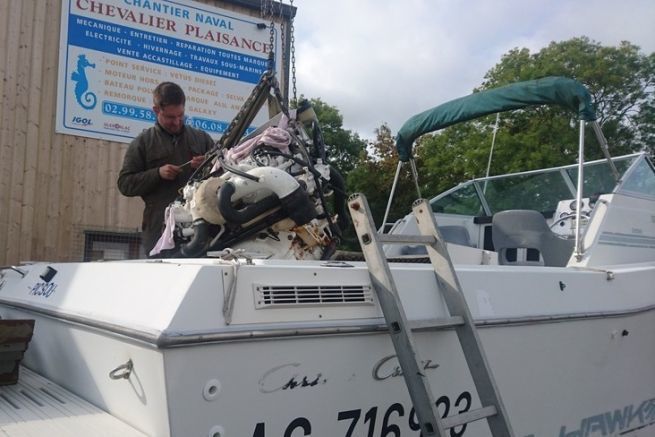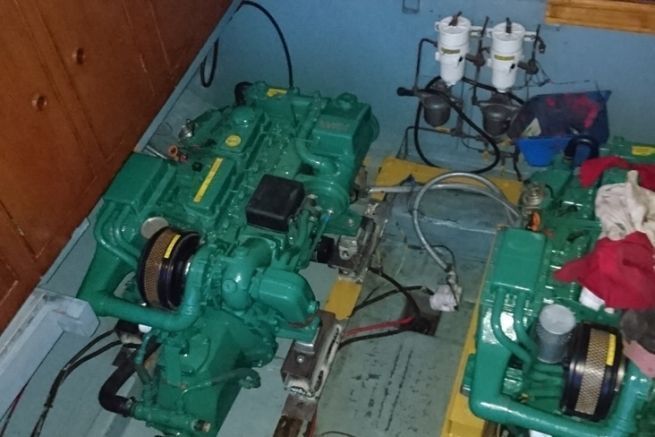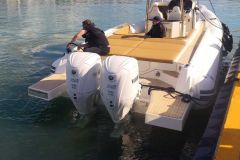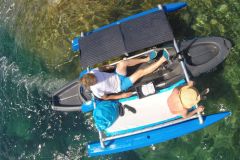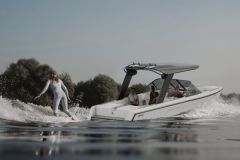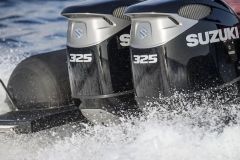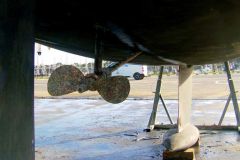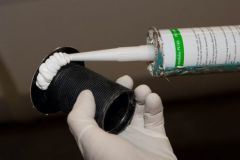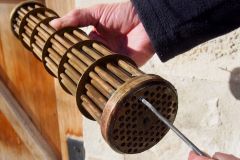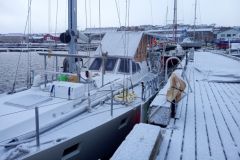Philippe, a mechanic at the Chevalier shipyard in La Ville-ès-Nonais (Ille-et-Vilaine), advises us on mechanical winterization.
Bilges must be clean
" Before moving on to the exterior of the boat, clean the bilges, tighten any loose bolts. A little sandpaper on all traces of rust to get back to the metal and then protect it with either marine grease or a coat of anti-rust. The goal is to have bilges and screws as clean as possible, guaranteeing that you can identify any leaks, oil or otherwise ", says the mechanic.
A good anode is a worn anode
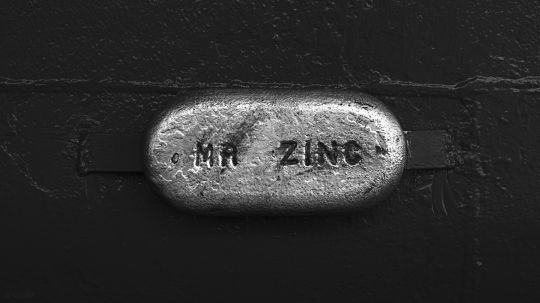
Anodes, there are several on a boat. " A good anode ", explains the mechanic, " is the one that wears out. Electrolysis will happen in any case and if it doesn't attack the anode, it will attack something else. So you have to worry in two cases, if it is too worn or if it is not worn enough ", explains Philippe. " In the first case, replace it with the same model, new. In the second case, replace it with the appropriate model. There are different types of anodes (zinc, aluminum or phosphorus), adapted to different waters and, above all, to different places on the boat. Remember to check them all, from the propeller shaft to the engine "insists Philippe.
The propeller shaft
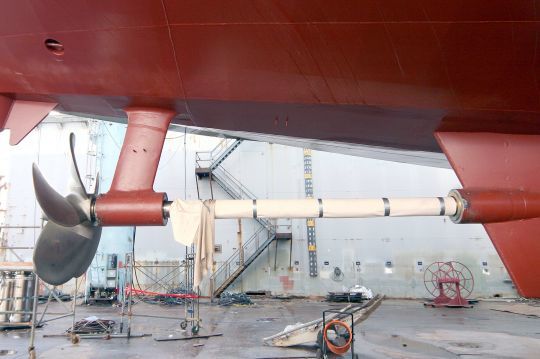
If there is one element that must not show any play or signs of weakness, it is the propeller shaft. Its breakage is a major damage that will generate very high costs. Several points should be checked. The anode of the shaft. It must be replaced if it is too worn. Then its global fixation. It must not have any play or movement other than rotation. The gland, which will pass through the hull, should be inspected thoroughly. Finally, the hydrolubes should be inspected as well. " If in doubt, do not take any risks and seek professional advice "Philippe warns.
Hull valves
Last but not least, the hull valves should be checked during winterization. Whether they are cooling water intakes or those useful for onboard comfort ( toilets in particular ). " A hull valve must not only be easy to operate, it must also be free of corrosion and excessive wear. Its connection with the hull must be clean and unbroken. No cracks on the antifouling, no trace of rubbing or impact "explains Philippe.
